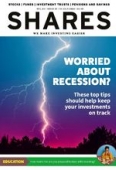Archived article
Please note that tax, investment, pension and ISA rules can change and the information and any views contained in this article may now be inaccurate.
Sell-off creates perfect opportunity to buy Japanese funds and trusts

Long-term investors in Japanese shares have endured several false dawns since the country’s Nikkei 225 stock index peaked at above 38,900 points in 1989.
At the time of writing, the Nikkei 225 sits at the 26,393 mark, about 15% off its autumn 2021 one-year peak of 30,670 and down 9.9% year-to-date.
Yet this looks an exciting time to invest in Japan where shares are attractively valued relative to global peers and companies are paying more attention to improving shareholder returns and thinking harder about where they spend money.
Activist investors are pushing hard to accelerate positive corporate change through engagement with management, a strategy pursued by London-listed investment trusts such as AVI Japan Opportunity (AJOT) and Nippon Active Value Fund (NAVF).
Japan is undergoing a major technological transformation that should deliver growth and substantial productivity gains over time, with automation among the themes exciting investors.
WHY IS THE CURRENCY SO WEAK?
Having fought a long battle against deflation, Japan is sticking by its ultra-easy monetary policies in a decision which has sent the yen plunging against the dollar, boosting prospects for exporters.
One reason why the Bank of Japan is maintaining a different path to other central banks is its belief that current inflationary pressures in Japan will be temporary.
So far, there are no signs of material inflation in Japan – the consumer prices index recorded 1.9% growth in May 2022 and Japanese wages have only risen by about 3% per year in nominal terms over the last 30 years.
James B. Rosenwald, portfolio manager of Nippon Active Value Fund, says now is a ‘marvellous time’ to invest in Japanese companies given the weak yen and a 30-plus year bear market in stocks. He adds: ‘We could easily see equities providing a 100% return in the next five years.’
Why yen weakness is a double-edged sword
Many people assume weakness in Japan’s currency is good for the country’s exporters.
As China moves past current Covid issues and the government stimulates the world’s second biggest economy, 2023 could well prove a good year for Japanese exporters. A cheaper yen also makes Japan a more affordable destination for overseas travellers, bringing in tourist cash for the hospitality sector.
However, many manufacturers have already moved production closer to end customers in foreign countries and so will not benefit as much as one might think from a weak yen.
The weak currency will not help the country meet its energy needs as Japan is a huge net importer of oil. Nor will increased imported costs help corporate profit margins either, while the average Japanese consumer is feeling the pinch from higher energy, food and fuel prices.
THIS TIME IT REALLY IS DIFFERENT
‘There’s a few misconceptions about the Japanese market that may be leading to the undervaluation,’explains Andy McCagg, senior client portfolio manager at Nomura Asset Management UK.
One of these is that the Japanese market is viewed as having a lower return on equity, and that’s true. ‘Overall, Japan’s Topix index is pretty broad so there are lot of companies that have a return on equity lower than say 10%, some much lower than that even,’ adds McCagg.
Carl Vine, manager of the M&G Japan (B74CQP7) fund, concedes Japan is a market where the hope of the past couple of decades has to some extent been dashed, so there is a fair amount of fatigue in hearing about Japan and how it might be different this time.
Nevertheless, Vine sees an overwhelming case to have exposure to Japanese equities right now. The M&G fund manager believes over the next five and 10 years that owners of Japanese equity as an asset class will be ‘very well rewarded’ relative to the returns that are available from other major equity markets.
Japanese stocks are cheap, but the real story is about earnings, explains Vine. ‘In the last 10 years Japanese profits have compounded at about 10% growth per annum in local currency. That’s better than the S&P 500 (US stock index), a phenomenal delivery of earnings growth from the Japanese corporate sector helped by Abenomics. And as each day goes by this wave of corporate self-help and reform is like a tsunami; it is undeniable at this point.’
Japanese companies still have a lot of what Vine describes as ‘low hanging fruit’ in terms of raising prices and boosting margins, optimising their cost structures and consolidating fragmented markets through a wave of mergers and acquisitions that is now underway.
‘For me, the stars are aligned for meaningful earnings growth coming not from GDP growth, not from big revenue growth, but just ongoing self-help,’ argues Vine.
His enthusiasm is shared by Tokyo-based Nicholas Weindling, portfolio manager of investment trust JPMorgan Japanese (JFJ), who is also positive about Japan’s longer-term outlook.
Weindling says there is ‘a very strong reason’ to invest in Japan right now on a multi-year basis.
Share buybacks in Japan, where a staggering 50% of companies have net cash on their balance sheets, rose 65% year-on-year in the first quarter of 2022, building on 2021’s record year for repurchases as Japanese companies at long last strive to make use of very inefficient balance sheets.
‘I feel like the tanker has changed direction’, says Weindling, adding that activists are now ‘starting to push on an open door, because companies want to do the right thing in terms of more diversity, more women on boards, more independent directors.’
James Carthew, head of investment companies at research group, QuotedData, says the real change in Japan, and one that has accelerated recently, has been in the pace of shareholder-friendly actions.
Companies in every sector are buying back stock – between 2% and 5% is common – as they begin to optimise their cash-heavy balance sheets.
Carthew believes the point at which it looks like US interest rates are going to stop rising could be the catalyst to narrow the valuation gap between Japanese equities and other markets.
JPMorgan’s Weindling doesn’t see any signs of ‘sticky inflation’ in Japan, where the inflation rate in Japan is currently just over 2%.
M&G’s Vine says that ‘if ever there is an economy or a stock market that needs some inflation it would be Japan’, which appears to have exited deflation. Some inflation should pave the way for a normalisation of interest rates and Vine believes that would be positive for Japanese stocks.
THREE GOOD WAYS TO INVEST IN JAPAN
SPDR MSCI Japan UCITS ETF (JPJP) £36.53
Ongoing charge: 0.12%
Investors seeking a low-cost, east play on the sumo-sized re-rating potential of the Japanese equity market might consider tracker fund SPDR MSCI Japan UCITS ETF (JPJP).
It is designed to mirror the performance of the MSCI Japan index for a low ongoing charge of just 0.12% a year.
The MSCI Japan index is designed to measure the performance of the large and mid-cap segments of the Japanese market.
With approximately 240 holdings, the exchange-traded fund’s biggest positions include car company Toyota (7203:TYO) and tech/media conglomerate Sony (6758:TYO).
According to website JustETF, the fund has delivered a total return of 12.1% over three years, but the drawdown in the Japanese equity market means it is down 9.2% over one year and 13.3% year-to-date.
JPMorgan Japanese Investment Trust (JFJ) 436p
Ongoing charge: 0.6%
Investment trust JPMorgan Japanese invests in great companies ‘that happen to be listed in Japan’ according to manager Nicholas Weindling. He seeks firms with extremely high market shares and margins, very good free cash flow and strong pricing power.
The biggest positions include optical products maker Hoya (7741:TYO), automation sensors leader Keyence (6861:TYO) and bicycle gears-to-fishing tackle maker Shimano (7309:TYO).
JPMorgan Japanese recently invested in Nippon Paint (4612:TYO), the number one paint company in Japan and China, which Weindling believes has the pricing power to cope with a rise in oil prices.
The investment trust has generated 11.6% annualised returns over the past 10 years, according to Morningstar. More recent returns have been muted, yet investors interested in Japan should view share price weakness as an opportunity to buy into a well-run investment vehicle with scope to deliver outsized returns in time. It trades at a 7.1% discount to the value of its underlying assets.
M&G Japan Fund (B74CQP7)
Ongoing charge: 0.55%
Capital growth and income-focused M&G Japan is ranked top quartile for performance in the IA Japan sector over one, three and five years and has delivered a 10-year annualised return of 10.6%, according to Morningstar.
M&G Japan straddles the growth and value camps. While the Japanese market still favours value stocks, the M&G fund has a concentrated portfolio of 44 holdings and is positioned to benefit once the pendulum swings to growth again.
Manager Carl Vine believes there is a good chance that Japanese listed companies will deliver another decade of double-digit growth in earnings.
As at 31 May 2022, the top 10 positions included automaker Toyota, Kyoto-based video games giant Nintendo (7974:TYO), as well as Nippon Telegraph and Telephone Corporation (9432:TYO), the Japan telco that has compounded returns over time by raising its margins while buying back its own shares.
Important information:
These articles are provided by Shares magazine which is published by AJ Bell Media, a part of AJ Bell. Shares is not written by AJ Bell.
Shares is provided for your general information and use and is not a personal recommendation to invest. It is not intended to be relied upon by you in making or not making any investment decisions. The investments referred to in these articles will not be suitable for all investors. If in doubt please seek appropriate independent financial advice.
Investors acting on the information in these articles do so at their own risk and AJ Bell Media and its staff do not accept liability for losses suffered by investors as a result of their investment decisions.
Issue contents
Education
Feature
Great Ideas
News
- Collapse of Elon Musk’s Twitter deal could spark Tesla share price recovery
- Kistos aims for £1 billion tie-up with Serica to create North Sea oil and gas champion
- The 2022 AGM season is seeing shareholder rebellions on pay gather pace
- The big US companies reporting over the next week and what it could mean for the economy
- Latest Fundsmith letter offers investors comfort despite tough market conditions

 magazine
magazine









